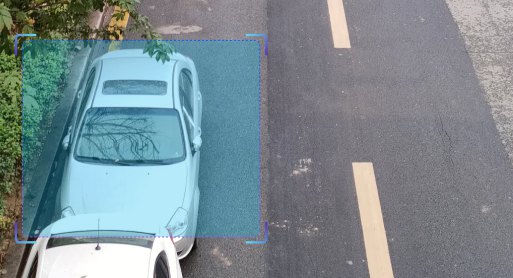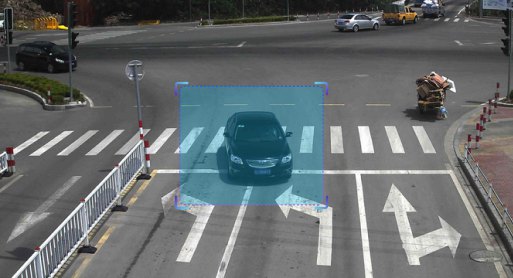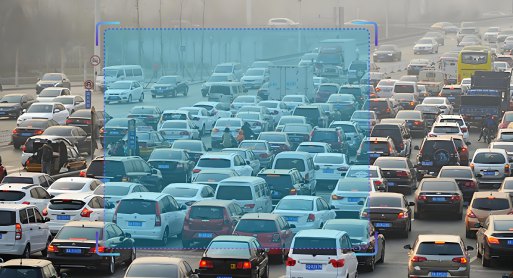
Vehicle Recognition

Algorithm Introduction
For the frame selection results from structured detection and tracking in video streams and the captured images from intelligent front-end cameras, our solution employs AI vision algorithms to extract vehicle attributes and features. It supports multi-dimensional querying and analysis of various attributes including vehicle type, vehicle color, vehicle model, license plate number, and license plate type.
- ● Resolution requirement: Below 1080p (1920×1080)
- ● Minimum pixel requirements for vehicle attribute recognition:
- 1). Vehicle make: 128×128 pixels
- 2). Vehicle model: 128×128 pixels
- 3). Vehicle type: 80×80 pixels
- 4). Vehicle color: 80×80 pixels
Application Value
-

Urban Roads
At urban intersections and arterial roads, AI vision algorithms automatically monitor traffic violations such as red-light running, speeding, and illegal parking. By analyzing multi-dimensional vehicle attribute data, the system evaluates urban traffic flow and vehicle type distribution, providing data support for traffic planning and congestion management. -

Expressways
Deployed at expressway entrances/exits, service areas, and key road sections, the solution leverages vehicle attribute data to count traffic volume by time periods, optimizing road management strategies. Through license plate type recognition, it rapidly screens vehicles violating passage regulations, ensuring driving safety on expressways.
FAQ
-
Algorithm AccuracyAll algorithms published on the website claim accuracies above 90 %. However, real-world performance drops can occur for the following reasons:
(1) Poor imaging quality, such as
• Strong light, backlight, nighttime, rain, snow, or fog degrading image quality
• Low resolution, motion blur, lens contamination, compression artifacts, or sensor noise
• Targets being partially or fully occluded (common in object detection, tracking, and pose estimation)
(2) The website provides two broad classes of algorithms: general-purpose and long-tail (rare scenes, uncommon object categories, or insufficient training data). Long-tail algorithms typically exhibit weaker generalization.
(3) Accuracy is not guaranteed in boundary or extreme scenarios.
-
Deployment & InferenceWe offer multiple deployment formats—Models, Applets and SDKs.
Compatibility has been verified with more than ten domestic chip vendors, including Huawei Ascend, Iluvatar, and Denglin, ensuring full support for China-made CPUs, GPUs, and NPUs to meet high-grade IT innovation requirements.
For each hardware configuration, we select and deploy a high-accuracy model whose parameter count is optimally matched to the available compute power.
-
How to Customize an AlgorithmAll algorithms showcased on the website come with ready-to-use models and corresponding application examples. If you need further optimization or customization, choose one of the following paths:
(1) Standard Customization (highest accuracy, longer lead time)
Requirements discussion → collect valid data (≥1 000 images or ≥100 video clips from your scenario) → custom algorithm development & deployment → acceptance testing
(2) Rapid Implementation (Monolith:https://monolith.sensefoundry.cn/)
Monolith provides an intuitive, web-based interface that requires no deep AI expertise. In as little as 30 minutes you can upload data, leverage smart annotation, train, and deploy a high-performance vision model end-to-end—dramatically shortening the algorithm production cycle.






